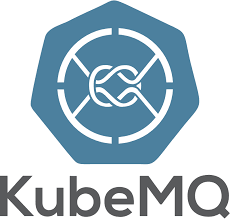Maximizing Edge Performance: The Power of the KubeMQ, Rancher Prime, and K3s Integration


SUSE guest blog authored by:
Lior Nabat, CTO & Co-Founder at KubeMQ
In today’s fast-paced world, modern applications require fast and reliable performance, and edge computing has become a critical component to achieving this goal. By processing data near the source, instead of transmitting it to a centralized location, edge computing reduces latency and increases efficiency. To achieve optimal edge computing performance, organizations need the right tools and strategies in place. This is where KubeMQ, Rancher Prime, and K3s come in. Together, they enable edge computing and help organizations achieve their performance goals. In this post, we’ll explore how the KubeMQ, Rancher Prime, and K3s integration can maximize edge performance and take your edge computing strategy to the next level.
Why are KubeMQ, Rancher Prime, and K3s important for edge computing?
KubeMQ‘s messaging platform allows for the reliable and scalable communication between microservices and applications. It enables the exchange of data between different components of the application while providing high performance, low latency, and fault tolerance. Additionally, KubeMQ has a small footprint container that can be easily deployed on edge devices with limited resources. This ensures that KubeMQ can run seamlessly on edge devices, providing efficient communication infrastructure while minimizing the use of system resources.
Rancher Prime, the leading open-source multi-cluster orchestration platform by SUSE, provides users the flexibility to provision any CNCF certified Kubernetes distribution, including K3s, in a low touch fashion.
K3s is the leading lightweight Kubernetes distribution that enables easy deployment and management of containerized applications at the edge. It provides a simplified approach to Kubernetes that’s optimized for resource-constrained environments such as the edge, allowing for easy deployment and management of applications even in remote and disconnected locations.
Together, KubeMQ, Rancher Prime, and K3s complement each other to create a powerful edge computing solution. KubeMQ’s messaging capabilities provide the necessary communication infrastructure for edge applications, while Rancher Prime and K3s enable easy deployment and management of containerized applications in edge environments. This integration provides a reliable and efficient way to process data at the edge, enabling faster and more responsive applications.
How does the KubeMQ – Rancher Prime integration work?
The integration between KubeMQ and Rancher Prime is made possible with the KubeMQ helm chart, which are available in the built-in Rancher Prime apps catalog. The helm chart is a Kubernetes extension that simplifies the deployment and management of KubeMQ clusters on K3s clusters deployed with Rancher Prime.
Once the KubeMQ helm chart is deployed, users can create KubeMQ clusters using the Rancher Prime interface. The KubeMQ clusters can be configured with various options, such as the number of replicas, persistence settings, and network settings. The Rancher Prime interface provides a user-friendly way to manage KubeMQ clusters and monitor their health and performance.
Use Case: POS – Store to Cloud using KubeMQ and K3s
In the retail industry, point of sale (POS) systems are used to process transactions and manage inventory. With the rise of cloud computing, it has become common to connect POS systems to cloud-based stores for real-time updates and centralized management. The use of KubeMQ and K3s enables efficient and reliable infrastructure for the POS system and the cloud-based store. By deploying a lightweight KubeMQ instance on K3s at the edge and KubeMQ in Rancher Prime in the cloud, companies can ensure reliable message transmission, reduce latency, and provide scalability and flexibility for their system. This architecture provides several benefits, including support for thousands of stores, handling high message loads, and 24-hour communication failure recovery, ensuring continuous uptime and the ability to support peak hours scenarios in stores.

Summary
Together, KubeMQ, Rancher Prime, and K3s provide organizations with a powerful set of capabilities to improve their edge computing performance. By using KubeMQ for messaging, Rancher Prime for container orchestration, and K3s as the Kubernetes distro optimized for edge environments, organizations can build a scalable, reliable, and efficient edge computing infrastructure that can support a wide range of use cases.
To learn more about how KubeMQ and SUSE can help you maximize your edge infrastructure performance, visit our website for more information or get in touch with the KubeMQ team. You can also contact the SUSE team.
We’ll be also happy to meet you at KubeCon Europe in Amsterdam – get in touch with us at marketing@kubemq.io to schedule a meeting! Please feel free to stop by the Rancher by SUSE booth as well.
Author: Lior Nabat
 Lior Nabat is KubeMQ’s technology leader and product architect. As a serial technology entrepreneur with over 20 years of experience in software ventures and product development, he brings cloud-native expertise and hands-on experience. Lior founded Tradency (financial trading technology) 14 years ago and led as the CEO since inception. Previously he held key management positions at DSPG, Alpha Cell and TdSoft. Lior holds B.A in Mathematics and Computer science from the Open University in Tel-Aviv Israel and AMP from the University of Pennsylvania-The Wharton School.
Lior Nabat is KubeMQ’s technology leader and product architect. As a serial technology entrepreneur with over 20 years of experience in software ventures and product development, he brings cloud-native expertise and hands-on experience. Lior founded Tradency (financial trading technology) 14 years ago and led as the CEO since inception. Previously he held key management positions at DSPG, Alpha Cell and TdSoft. Lior holds B.A in Mathematics and Computer science from the Open University in Tel-Aviv Israel and AMP from the University of Pennsylvania-The Wharton School.
Related Articles
Feb 01st, 2023
Container Security: Zero Trust Runtime Security
Aug 10th, 2022